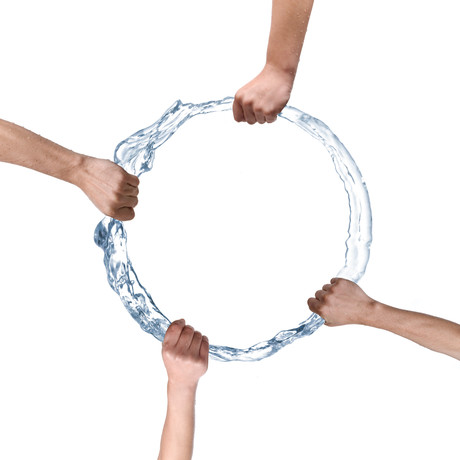Driving sustainability in the Australia water industry

Facing up to water security challenges and adopting strategies to allocate water amongst competing users in an economically efficient manner can drive Australia’s water security.
This is in line with global survey findings in the 2017 Black & Veatch Strategic Directions: Water Industry Report, which shows that water leaders worldwide are adapting to a new normal of accommodating a changing climate and rising public scrutiny of the water supply and, in the process, exhibiting new levels of leadership and political will.
Industry leaders anticipate better integration and involvement in land-use planning, looking beyond the scope of water and sewerage provision and collaborating with other sectors including waste, energy and local government in the next era for the Australian water industry.
Integrated planning
Integrated planning resolves this by encouraging providers to consider all aspects of the water management cycle. The Strategic Directions Report shows that while early adopters are making progress with implementing more holistic approaches to planning, opportunities exist to go further.
Integrated planning focuses on driving the best solution for the community. It is getting past the siloed thinking — water, wastewater, stormwater and reclaimed water — and identifying an integrated solution that will provide the resiliency the community needs in the long term.
The key to that is having multiple stakeholders — the community, regulators, politicians and end users — work together to determine what is best for that community. At the end of the day, we are identifying that we have limited resources and how we are going to utilise those resources most effectively for the community. Collaboration with all the stakeholders will drive best-for-community services.
Australian water leaders suggest the steps that need to be considered include: systemic change in policy and regulation to ensure wider collaboration with other agencies and communities to respond to a broader spectrum of customer needs and expectations; better integration of water cycle planning with land-use planning; greater recognition of the role of water in strategic or early planning of cities and regions; and inclusion of water businesses in integrated planning.
In the interest of resilience, it will be critical to consider less traditional water sources than those that have served us in the past. As well as re-use of wastewater, and seawater desalination, improvements are possible for stormwater management in the urban water cycle through harvesting, re-use, creating green spaces in Australian cities and improving waterway health.
Security
Securing its water assets from deterioration, including upgrading dams and retarding basins against failure, and rehabilitation or replacement of buried assets is a priority for Australia.
When addressing the challenges of ageing infrastructure, capital investment or water quality, utilities often tackle these issues individually and without an overarching plan. However, the government can help to facilitate integrated planning by encouraging providers to consider all aspects of the water management cycle.
One example is Melbourne’s investments in retarding basin upgrades when it recognised that proper maintenance would be necessary as existing embankments could fail, causing downstream damage.
Utility provider Melbourne Water maintains these retarding basins as essential features of the city’s drainage system that help to reduce flooding. They are designed to catch heavy rainfall and hold it in the basin, a reserved low-lying area of land. At the same time, these retarding basins also serve the community as recreational areas.
In addition to refreshing ageing infrastructure, the proliferation of smart devices in utility systems has created new channels for hackers to disable critical infrastructure. This year’s global survey responses indicate that there are opportunities for utilities to shore up their systems against physical and digital threats.
Water as ‘the science of tomorrow’
With the water issues faced by Australia reflecting the findings of the global survey, it reinforces the point that actions taken across these diverse issues are ultimately in service to a water supply that is sustainable, safe, continuous and plentiful — yet finite. When leaders stand up for the health of our water infrastructure, the path to sustainability leads to opportunities.
The 2017 Black & Veatch Strategic Directions: Water Industry Report can be downloaded at bv.com.

$14K community grant provides water savings for school
Lalor North Primary School has undergone a water-saving transformation thanks to a community...
Lagoon cover dewatering solution for Gippsland Water
Gippsland Water was experiencing issues with its cover dewatering pumps, which were solved...
The role of AI in smart water management
IoT sensors, AI and predictive analytics are emerging as key solutions to enhance water...







